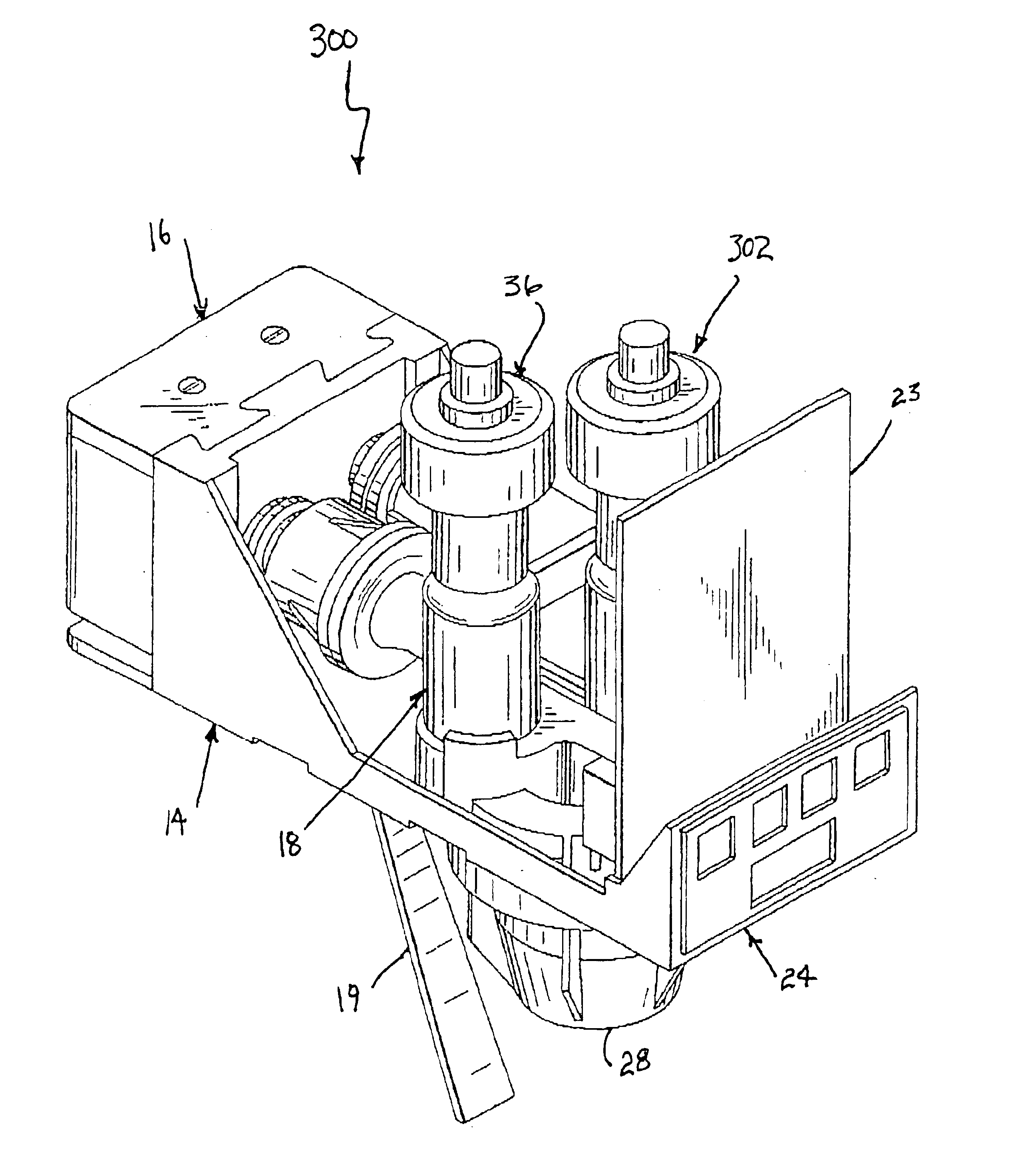Valve for dispensing two liquids at a predetermined ratio
a technology for beverage dispensing valves and valves, which is applied in the direction of liquid transferring devices, transportation and packaging, mechanical equipment, etc., can solve the problems of improper ratio of drinks, mechanical complexity, and negative effects on retailers as well as drink brand owners, and achieve accurate sense of flow rate variations, low cost, and not easy to damag
- Summary
- Abstract
- Description
- Claims
- Application Information
AI Technical Summary
Benefits of technology
Problems solved by technology
Method used
Image
Examples
Embodiment Construction
The valve of the present invention is seen in FIG. 1 and generally referred to by the numeral 10, and includes a removable outer protective shell 12. Removal of shell 12, as seen in FIGS. 2 and 3, reveals various internal valve components including a base plate 14, a quick disconnect mounting block 16, a syrup flow body assembly 18, a water flow body assembly 20, a nozzle body assembly 22 and a printed circuit board electronic control 23. Base plate 14 includes a front push button control portion 24 having a plurality of diaphragm type switches 24a-24e for operating valve 10. Switch 24e causes valve 10 to dispense for as long as it is operated / pushed. In the same manner, a lever arm 19 can alternatively be used to operate a switch, not shown, to cause valve 10 to dispense. As is well understood, arm 19 is pivotally suspended from base plate 14 and is typically actuated by pushing a cup to be filled there against followed by retraction of the cup once it is filled. Switches 24a-e are...
PUM
 Login to View More
Login to View More Abstract
Description
Claims
Application Information
 Login to View More
Login to View More - R&D
- Intellectual Property
- Life Sciences
- Materials
- Tech Scout
- Unparalleled Data Quality
- Higher Quality Content
- 60% Fewer Hallucinations
Browse by: Latest US Patents, China's latest patents, Technical Efficacy Thesaurus, Application Domain, Technology Topic, Popular Technical Reports.
© 2025 PatSnap. All rights reserved.Legal|Privacy policy|Modern Slavery Act Transparency Statement|Sitemap|About US| Contact US: help@patsnap.com



